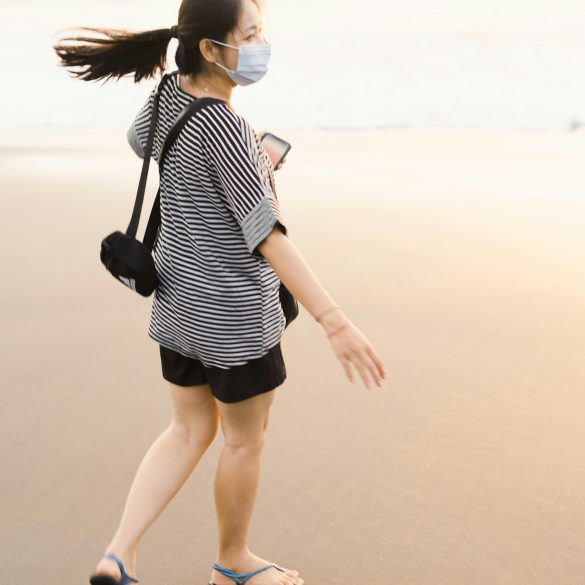Solo Travel Safety Tips for Women: 12 Essentials for 2024
There are few things that feel quite as liberating—or, honestly, as intimidating—as booking a solo trip as a woman these days. It’s funny: when I first started out in travel content back in 2008, solo travel was still niche, even frowned upon by some circles, and the conversation around safety was riddled with outdated advice (“Just don’t go!” was common). Now, flash forward to 2024, and the number of women exploring the world alone has skyrocketed—with over 38% of solo travelers worldwide identifying as female, according to recent reports1. That’s a massive cultural shift. Still, news headlines and social media feeds remain filled with questions, doubts, firsthand stories, and—let’s be honest—plenty of fear-mongering. Yet, despite the noise, real confidence comes not just from statistics, but from authentic lived experience, sound preparation, and the wisdom of others who’ve been there, made mistakes, and learned the hard way.
So why this guide? Because, truthfully, I wish someone had handed me a candid, up-to-date safety playbook all those years ago—one rooted in recent data, practical tips, and emotional honesty. I’m still learning; we all are. What matters now is empowering women with real strategies that go beyond lock-the-door advice, embracing smart tech, local knowledge, and a kind of risk-aware optimism that makes modern solo travel both safe and fun. Let’s dig in.
Why Solo Travel for Women Is Surging in 2024
The post-pandemic years have radically transformed how, why, and where women travel alone. Did you know that in 2023, Google reported a surge in searches for “safe solo travel for women” by nearly 30% year-on-year2? It’s not just about bucket lists or social media aesthetics—there’s a new hunger for growth, independence, and self-discovery that solo travel uniquely provides. What’s more, the industry itself has begun listening: more female-specific safety tech, greater transparency from travel brands, and crucially, voices of women from every background sharing lived experience in local contexts. I still remember sitting in a hostel in Barcelona, talking with a 56-year-old Canadian nurse about her first solo journey—she’d delayed it for decades, citing safety worries, only to discover the world wasn’t half as scary as she’d imagined. Sure, there are risks, but the rewards (confidence, resilience, perspective) redefine who we are.
Japan boasts one of the world’s lowest crime rates for tourists and is often ranked #1 for solo female travel safety according to the Women’s Danger Index (2023)3. I spent two weeks navigating Tokyo solo last spring—never once did I feel unsafe, even late at night on crowded trains. Local respect, visible police presence, and intuitive wayfinding truly make Japan a benchmark for solo women travelers.
Core Fears vs. Modern Realities
Let’s get brutally honest: the biggest fears for solo female travelers haven’t changed much—personal harm, theft, harassment, scam vulnerability, and (more recently) digital security. What’s shifted is how we address those risks. Technology helps, local networks help even more, and real stories of mistakes and triumphs create models that go beyond Pinterest-perfect travel lists. Just last year, during a work trip to Istanbul, I made the rookie mistake of not checking local taxi app recommendations; it cost me double the normal fare. Annoying, yes, but not catastrophic. I learned, adapted, and moved on—a process that’s now central to every safety strategy I use and teach.
True solo travel safety is fluid—what works in Japan won’t work in Brazil, and vice versa. The strategy: combine preparation, situational awareness, and humility. There will always be unknowns—and that’s what keeps it human.
According to UN Women, over 80% of solo female travelers report feeling safer today than a decade ago, largely due to better travel infrastructure and online support networks4. Yet, some risks (like street harassment or police procedural surprises) still catch even seasoned pros off guard. My rule: always expect the unexpected, and build enough margin for mistakes.
“Travel is never a matter of money but of courage.”
Smart Preparation: Research, Planning & Documents
Time and again, I’ve seen anxiety melt away for solo women travelers when their pre-trip prep is solid. Let’s be clear: spontaneity’s great, but for a first-timer or seasoned veteran, having backup plans isn’t paranoia—it’s wisdom. Recently, the US State Department 5 listed lost passports as the #1 crisis scenario for Americans abroad. I used to scoff at “print everything” rules, but after my phone died in Bali and my digital tickets vanished, I swiftly re-joined the analog world. Here’s my go-to checklist:
- Photocopy your documents: Keep a physical and cloud-based backup of your passport, visa, travel insurance, and emergency contacts.
- Share your itinerary: Give details (not just vague “I’m off to Europe!” updates) to a trusted friend or family member. Use real-time location sharing apps when possible.
- Research local scams: SDG Travel’s annual scam report highlights region-specific risks, like the “friendly stranger” trick in Paris or fake police in Delhi6.
- Establish embassy contacts: Know how to reach your nation’s embassy or consulate wherever you are.
One caveat: don’t over-plan to the point of rigidity. Leave space for adventure—and last-minute pivots due to weather, local advice, or gut feeling. “Solo” means personal responsibility, yes, but also creative flexibility.
Digital Security & Data Protection
In 2024, over 40% of travel-related fraud targeted women ages 25-45 on public WiFi7. I learned this the hard way in Prague—one dodgy café router and my social accounts were briefly compromised. Lesson: VPNs are not optional. Period.
- Install a reputable VPN app before you depart.
- Never access sensitive accounts (banking, email, etc.) on public WiFi.
- Enable two-factor authentication for all key travel accounts.
- Use virtual credit cards or limited-use payment apps for online booking.
Something I underestimated early on: the sheer convenience of tech-savvy travel can lull you into ignorance about digital vulnerability. Keep your software updated, avoid “free” USB charging stations, and always log out of shared devices. And yes, scammers are getting smarter—from deepfake phishing messages to AI-generated booking pages.
Local Culture, Laws, & Insider Tips
Here’s what I’ve learned: understanding local norms isn’t just “nice to know”—it’s mission-critical. For example, in Morocco, women travelers often benefit from joining organized group activities to bypass street hassle. In Sweden, solo female travelers routinely report feeling safer thanks to strict anti-harassment laws and cultural egalitarianism8. Laws matter, but so do unspoken social codes.
- Dress codes can be fluid—adapt based on region, not just country. Istanbul differs greatly from rural Anatolia.
- Public affection, eye contact, and solo dining etiquette vary immensely; observe how local women navigate public spaces.
- Know emergency numbers and basic phrases for urgent help in the local language.
Sweden’s 2023 Global Gender Gap Index scores placed it among the top three safest travel destinations for solo women in Europe9. Gender equality is institutionalized, yet solo female travelers say urban areas feel subtly more secure than rural villages—a nuance that rarely makes it into guidebooks.
Quick tip: I always reach out to local women on travel forums before arrival—they know which neighborhoods, businesses, or transport tips are most reliable. Never rely solely on generic hotel concierge advice; diversify your sources.
“It isn’t the mountains ahead to climb that wear you out; it’s the pebble in your shoe.”
Physical Safety: Accommodation, Transport, Navigation
Physical safety is the real “make or break” for comfort on the road. Let me start by revising my earlier advice: I used to say stick strictly to branded hotels, but after a year of hosteling in central Europe, I realised that smaller, local-run establishments sometimes excel on security. The key is knowing what to check:
- Always review recent guest-security reviews (TripAdvisor, Hostelworld, Google) before booking.
- Ask about front desk hours, CCTV coverage, and secure luggage storage.
- Book upper-floor rooms away from street level when possible.
On transport: I’ve argued with colleagues about best practice on solo night navigation. My take? Avoid late-night mass transit; opt for licensed rideshares, marked taxis, or daytime walking. In India, pre-paid taxi counters at airports are a gamechanger for avoiding scams10. And in Tokyo, the metro is so safe it’s almost surreal—just don’t fall asleep during rush hour.
- Do a perimeter review before entering new accommodation—are exits marked, security visible?
- Use Google Maps or a local equivalent for safe walking routes, especially after dark.
- Carry a backup power bank—dead phones are a major risk factor.

Essential Packing: Must-Have Gear for Solo Safety
Go ahead, call me obsessive, but my packing list for solo travel has become practically a ritual. It’s not just about saving space—it’s about keeping critical safety gear on hand. Some items I threw in last minute have saved me in ways I never expected, such as a cheap whistle in Mexico—I used it to scare off a persistent street dog (unplanned, but effective). Here’s my 2024 essentials roundup:
- Lightweight doorstop or portable lock for guestroom doors
- Personal alarm/whistle
- Discreet money belt or anti-theft bag
- Sturdy water bottle (hydration = awareness)
- Mini first aid kit (plasters, antiseptic, basic meds)
- Backup charging bank
- Universal adapter and surge protector
According to the CDC’s 2023 travel advisory, “over 25% of emergency consulate visits by solo women travelers involve minor medical issues that proper packing could prevent”11. That’s practical proof you shouldn’t skip the basics.
“Pack light, pack right—emotional baggage leaves heavier marks than anything in your suitcase.”
Emotional Health: Navigating Solo Anxieties & Mental Safety
I’ll be honest: my toughest travel setbacks have rarely been about physical danger, but about managing solo anxiety in a foreign place. Anyone else get hit by that “What if something happens?” spiral on a midnight train when your phone battery’s low and you’re five stops from home? Turns out, emotional self-care is safety: studies show women who practice daily mental check-ins report higher feelings of security and resilience off the beaten path12.
- Build in downtime, not just “see it all” sightseeing marathons.
- Use grounding techniques—breathing exercises, journaling, simple mindfulness practices.
- Connect digitally with close friends during rough patches; but balance with local community
- Forgive yourself for mistakes—wrong turn in Florence? Happens to the best of us.
“Never travel faster than your soul can go.”
I used to believe safety was all about physical barriers and tech shields, but now, honestly, I reckon emotional adaptability and a sense of humor beat out any fancy gadget.
Building Community & Smart Connections
Isolation is one of the biggest challenges for solo travelers. What really strikes me, though, is how digital networks have made “alone” feel genuinely collaborative. Last month, I joined a pop-up meet-up in Lisbon via a simple Facebook group post—within minutes, I was swapping safety dos and don’ts with five fellow solo women, none of whom I’d have met otherwise.
Tap into women-specific travel forums and apps (Solo Female Travelers, Tourlina, Host A Sister). Over 65% of women say social community boosts travel confidence more than any tech tool13.
- Prioritize local connections—ask questions, get advice, join group events where needed.
- Share your travel tips and safety insights—pay it forward, especially to newer travelers.
- Don’t hesitate to leave uncomfortable situations. Trust gut feelings over social expectations.
“Trust your intuition—she’s got far more experience than your logic.”
Solo Travel Safety: Common Risks by Region
| Region | Common Safety Risks | Top Preventive Measures | Recommended Local Support |
|---|---|---|---|
| Western Europe | Pickpocketing, transit theft, scams | Money belts, vigilant navigation, travel groups | Hostels with female-only dorms, local Facebook groups |
| Southeast Asia | Bag snatching, taxi overcharge, water safety | Careful taxi selection, filtered water, alley avoidance | Women’s travel apps, consulate assistance, local expat networks |
| South America | Harassment, street theft, fake guides | Daytime transport, public meetups, avoiding isolated streets | Verified travel agencies, embassy networks, WhatsApp groups |
| Australia/New Zealand | Wildlife risks, remote terrain, health emergencies | Detailed route planning, emergency contacts, group tours for remote areas | Govt travel apps, hostel networks, medical facility lists |
These risks aren’t exhaustive—and I’ve updated my own checklist from experience, not just research. Local nuance beats generic advice, every time.
Quick FAQs on Solo Female Travel Safety
- Is it safe for women to travel alone in 2024? By and large, yes—especially in countries prioritising gender equality and tourist-friendly infrastructure. Just last quarter, the European Tourism Commission reported a decline in travel-related female assaults in most EU countries14.
- What should I do if I feel unsafe? Trust your instincts. Leave the area, notify someone, seek help from locals, and alert your embassy if needed—many embassies now offer real-time WhatsApp assistance.
- How do I handle harassment? Ignore, deflect, or draw public attention (whistle/personal alarm). Report incidents when possible.
- What are the best solo female travel apps? Tourlina, Safeture, Solo Female Travelers, MySafetipin (15) are current favorites—each offers location-based safety scoring and tips.
I’ve revised my own FAQ answers dozens of times as new info, laws, and community support resources evolve. That’s the joy—and challenge—of modern solo travel.
2024 Top Takeaways & Final Call to Adventure
- Preparation equals freedom: research, pack smart, and always carry backup plans—digital and analog.
- Rely on women’s networks for insider tips—local knowledge outperforms generic advice or automation.
- Forgive missteps: safety is a skill, not a fixed trait, and every trip teaches something new.
- Trust your intuition—fear is human, but so is boldness.
Ready to book your own solo adventure? Start by joining a women’s travel community, read recent local news, and build your packing list with safety in mind. Most importantly, honor your own curiosity and comfort—yours alone.
“I never travel without my diary. One should always have something sensational to read in the train.”
Future-Proofing Your Safe Solo Travels
Looking ahead, the pace of change in travel safety innovations remains breakneck. New government partnerships, ethical AI-based safety scoring, and expanded community platforms for women will continue to redefine what “safe” really means. I plan to update this guide regularly as new reports, tips, and personal stories emerge. If I could offer just one takeaway: embrace the evolving nature of solo travel safety, and stay curious—not just cautious.
References



